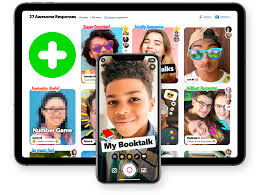
Students across the world are living in the midst of a global pandemic. Economic struggles permeate society. Authorities indicate there has been a rise in domestic violence reports. Mental health organizations struggle to meet the increased demand for their services. In the fall, students living in this environment of unrest will enter our classrooms, whether virtually or physically.
Stress and trauma negatively affect the brain’s cognitive abilities. As educators, we are not trained psychologists, nor are we mental health professionals. And yet we are called to meet the needs of our students, to support them by designing learning experiences that are accessible and lead to academic success. While educators with whom I speak are passionate and dedicated to the students they serve, many teachers and administrators themselves are in danger of burnout – full of stress and compassion fatigue. Rather than adding another initiative to educators’ plates, we can focus on embedding social emotional learning (SEL) competencies into “how” students learn academic content. While the inclusion of SEL accommodations may be necessary for students struggling with mental health, they are beneficial for all – fostering psychological safety and building learners’ life skills.
Neuroscience of Stress


As stay-at home orders took place across the country due to COVID19, physical isolation became the norm for weeks or even months – limiting our students’ interactions with educators, peers, and those outside their household. Neuroscience indicates that human connection serves to lessen anxiety – working to counteract the negative impacts of stress. According to the Collaborative for Academic, Social, and Emotional Learning (CASEL), relationship skills are a core competency of SEL. We support students’ social-emotional development when we provide opportunities for students to communicate, interact with others, build relationships, and collaborate. While virtual connections cannot replace the power of interactions in person, we can leverage technology tools to build relationships with and amongst students.
Human Connection from a Distance

Less is More – It is difficult to engage in conversations with others during a Zoom, Google Meet, or Microsoft Teams call when there are twenty or thirty individuals present. Maximize instructional minutes and build relationships with and between students by hosting academic conversations in small groups. Three 15 minute calls with a third of your class will result in more in depth exploration/discussion of content that a 45 minute call with the entire class. For the 30 minutes that students are not assigned to be on the call, assign collaborative documents they can complete with peers, or engage them in a digital discussion about the academic content via your learning management system.
Open Door Policy – Offer office hours via a recurring video call students can join to ask for support and/or clarification regarding your class. Be sure to make the link to the call visible to all students, and easy to locate. Psychological safety is key to human connection – ensure that students are aware you will use a waiting room for the call, so that they do not feel judged by their peers for asking a question. If you are using Google Meet, you can install a chrome extension to create a waiting room. The waiting room feature is native on the zoom app.

Peer to Peer – Though students may be physically apart, we can utilize technology platforms to foster student collaboration. Zoom features breakout rooms, the ability to send groups of students to their own virtual call within the main video call. As a host of the meeting, you can join and leave each room as you choose. (In order to utilize breakout rooms in zoom, be sure to enable the feature in settings for your account). Flipgrid allows students to engage asynchronously – to connect with peers via video on their own time. Flipgrid has a social media feel, thus increasing student motivation. The platform also has numerous features to ensure student safety and privacy. (Visit flipgrid.com to sign up for free!)

Though the human brain is vulnerable to anxiety during times of distress, it is resilient, built to self-repair. Neuroplasticity allows us to adapt. When we embed social-emotional opportunities into the learning experiences we design for students, when we foster human connection – we build a student-centered environment for learners to grow mentally, socially, emotionally, and academically.
